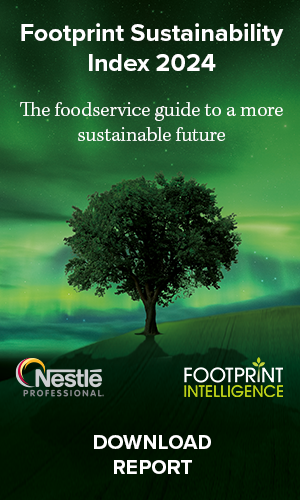Our latest digest of key sector developments includes scraps over scope 3 emissions, the definition of desirable progress and a painful start to the year for plastic packaging. David Burrows reports.
1. Making hay on misleading claims. Foodservice businesses can breathe more easily following news last week that the fashion sector will be the first to be examined by the greenwash police at the Competition and Markets Authority (CMA). “Our work so far indicates that there could be issues with greenwashing in the fashion sector and that’s why we’ve prioritised this area for further investigation,” explained the authority’s director of consumer protection Cecilia Parker Aranha. The regulator will be on the lookout for misleading claims (it shouldn’t have to look far, according to this recent piece in the Harvard Business Review), and whether brands are adhering to the new Green Claims Code published last year.
Still, all brands should be tightening their claims and erasing phrases like ‘eco’ and ‘environmentally-friendly’, say lawyers. Meanwhile, consultants prepare to fill their boots, as they are flooded with requests for life cycle assessments to back up the green claims that marketing teams want to make.
2. Is the environment plan coming together? Government greenwashing doesn’t fall within the CMA’s remit. This has meant ministers could spin their annual report on progress against their 25-year environment plan, which promised clean air and water, sustainable food, healthy soils and much less waste. Commitments that were nowhere near being met – for example sustainable fish stocks – were given ‘stable’ ratings, which annoyed the likes of the Natural Capital Committee when they assessed the 2020 update.
The 2021 progress report, published (but not publicised) in October, offers more detail but is far from transparent, picking and choosing baseline years and painting a rather pretty picture of the grim environmental reality. Going forward it’s the job of the Office for Environmental Protection to keep tabs on and police any government greenwashing – whether it has the clout or independence to do so is debatable.
3. Who’s afraid of the big, hairy target? The government’s assessment of work to minimise waste is one of the areas at odds with the real world. Despite recycling rates for household waste being pretty much stagnant for eight years, it is given a ‘mostly desirable’ rating in the environment plan’s progress report (‘mostly undesirable’ or ‘mixed picture’ were the other two categories, though there is no obvious explanation for the criteria in meeting these).
Figures published before Christmas showed recycling rates have actually gone into reverse, falling short of the 50% by 2020 target. That was an EU target. But don’t worry, another, more ambitious one is now in place – 65% by 2035, as part of the UK circular economy package announced in 2020. This is in line with the EU’s targets. But it’s not legally binding, according to a Defra spokesperson. So much for a green Brexit, eh.
4. Packaging pain looms. The government has spent the last three years consulting heavily on reforms designed to transform management of waste – especially packaging. Any day now an update on extended producer responsibility (EPR), consistent household collections and a deposit return scheme are expected. Over 4,700 responses came in for the three consultations; officials are desperately now trying to reconcile all those with what ministers actually want to do.
Meanwhile, the plastics tax looms large. Set to come into force in April, it will see a £200 charge applied to plastic packaging (including biodegradable, compostable and oxodegradable plastics) made in, or imported into, the UK unless it contains at least 30% recycled plastic. Question marks remain over how to calculate, verify and report recycled content, according to Ends Report’s quarterly risk review. A project in Scotland is working on developing physical tests for recycled content but it’s not yet clear whether regulators will use it to check up on brands.
Catering companies, in conversations with their packaging suppliers, have realised the bill from the tax might not be as painful as they perhaps first thought. Still, put it together with the high rate of inflation, current supply chain challenges, bans forcing companies into buying more expensive plastic alternatives and then EPR and life gets far more uncomfortable.
5. Scope 3 scrap. Foodservice packaging companies are also expecting discussions around net-zero to get “nastier”, as one distributor puts it. At the moment there is friendly engagement but the time will come when responsibilities are divided up. Scraps over responsibility for scope 3 greenhouse emissions are expected – and not just on packaging. Whether it is paper, coffee or beer “we’re going back and saying ‘you need to be better’ – it’s in your scope”, said Peach Pubs MD Hamish Stoddart in an interview for Footprint’s recent net-zero report.
Ingredients, from beef to beetroot, will make up the lion’s share of emissions in many food-focused businesses. This is why the term ‘regenerative farming’ has begun to spread fast through corporate literature and net-zero plans. However, it lacks a clear definition in many cases. Something else for the CMA to keep an eye on perhaps?














